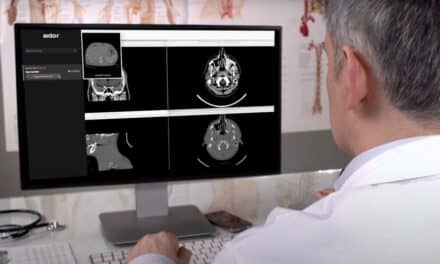A tiny robot which can travel deep into the lungs to detect and treat the first signs of cancer has been developed by researchers at the University of Leeds.
The ultra-soft tentacle, guided by magnets and measuring 2 millimeters in diameter, possesses the capability to access even the tiniest bronchial tubes. The technology was developed at the STORM Lab in Leeds, involving collaboration among engineers, scientists, and clinicians. Researchers say it opens the door to a highly precise, personalized, and significantly less intrusive method of treatment.
In their experiments, the magnetic tentacle robot was put to the test on a cadaver’s lungs, and the findings revealed that it can penetrate 37% deeper compared to conventional equipment, while also causing less damage to the surrounding tissue.
The research outcomes, financially supported by the European Research Council, have been officially disclosed in the journal Nature Engineering Communications.
Professor Pietro Valdastri, the director of the STORM Lab and the supervising researcher, expressed enthusiasm about this groundbreaking advancement.
“The unique attributes of this novel approach lie in its anatomical specificity, softness relative to the human body, and complete shape control through magnetic guidance,” said Valdastri. “These three key characteristics hold the promise of revolutionizing internal navigation within the body.”
Lung cancer stands as the leading cause of cancer-related deaths worldwide. In cases of early-stage non-small cell lung cancer, which comprises approximately 84% of occurrences, the standard treatment involves surgical intervention. Nonetheless, this method is generally highly invasive, resulting in substantial tissue removal. Unfortunately, not all patients are suitable candidates for this approach, and it can significantly affect lung function.
Beyond enhancing lung biopsy procedures by enabling more precise navigation, the magnetic tentacle robot holds the potential to revolutionize treatment approaches significantly. By using this technology, clinicians could pursue far less invasive treatments, specifically targeting malignant cells while preserving the normal function of healthy tissues and organs. The advancement offers hope for more effective and targeted therapies, fostering better outcomes for patients.
With promising results, the team’s next step involves gathering all the necessary data to initiate human trials. This crucial phase brings them closer to potentially implementing this groundbreaking technology for real-world medical applications.
At the STORM Lab, researchers have explored the possibilities of coordinating two independent magnetic tentacle robots to collaborate within a confined area of the human anatomy. This joint effort enables one robot to maneuver a camera while the other controls a laser for precise tumor removal.
These robots are constructed from silicone to minimize tissue damage and are guided by magnets positioned on robotic arms located outside the patient’s body.
In a notable experiment using a simulated skull, the team successfully conducted endonasal brain surgery, a technique that grants surgeons access through the nose to operate on regions at the front of the brain and the top of the spine. By effectively employing the synchronized actions of the magnetic robots, the potential for minimally invasive procedures with improved precision and reduced patient trauma becomes increasingly evident.
To accomplish their objectives, the researchers required the magnetic robots to operate autonomously, with one responsible for maneuvering the camera and the other directing the laser onto the tumor.
The team successfully simulated the removal of a benign pituitary gland tumor located at the base of the cranium. This achievement demonstrated, for the first time ever, the capability of controlling two robots within a confined area of the body.





